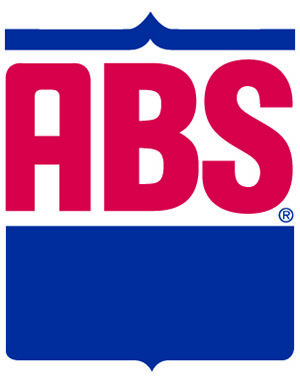Digest Highlights: Northeast milk tests keep setting records. July fluid sales were flat. Pacific Northwest milk movement is mostly local. Find a summary of these stories and updates on previous Progressive Dairyman news stories here.
Northeast FMMO milk setting test records
In addition to record volumes of milk deliveries, dairy farmers in the Northeast continue to set monthly butterfat and protein test records, according to the federal milk marketing order (FMMO) market administrator’s monthly newsletters.
Butterfat tests for August 2017 milk deliveries to FMMO #1 averaged 3.76 percent. That compares to 3.65 percent in August 2016; 3.64 percent in August 2015; and 3.69 percent in August 2014. The butterfat test has surpassed the previous year’s test for the past 10 months in a row.
At 3.04 percent, the August 2017 protein test was also the highest for the month. So far in 2017, monthly protein test records were set or tied in February, March, April, June, July and August.
July fluid milk sales lower
July 2017 vs. July 2016 U.S. packaged fluid milk sales*:
• total sales: 3.7 billion pounds, down 1.7 percent
• conventional products: 3.5 billion pounds, down 1.9 percent
• organic products: 199 million pounds, up 1.7 percent
Organic represented nearly 5.4 percent of total sales for July 2017. Compared to July a year earlier, sales of conventional and organic whole milk posted gains of 2 percent and 8.4 percent, respectively, but sales of conventional and organic low-fat and skim varieties were lower.
January-July 2017 vs. January-July 2016:
• total sales: 27.6 billion pounds, down 2.1 percent
• conventional products: 26.1 billion pounds, down 2.3 percent
• organic products: 1.5 billion pounds, up 0.9 percent
Organic represented nearly 5.4 percent of total sales for the period.
* Source: USDA Dairy Market News. The U.S. figures represent consumption of fluid milk products in federal milk order marketing areas and California, which account for approximately 92 percent of total fluid milk sales in the U.S. Sales outlets include food stores, convenience stores, warehouse stores/wholesale clubs, non-food stores, schools, the foodservice industry and home delivery.
Keeping it local: Pacific Northwest milk movement analyzed
The milk of dairy farms in the Pacific Northwest travels, on average, about 48 miles to processing plants, according to analysis by John Mykrantz, agricultural economist with the Federal Milk Marketing Order (FMMO) 124 market administrator’s office, Bothell, Washington.
Milk moving to distributing plants (primarily fluid milk processors) traveled an average of 105 miles, and milk moving to manufacturing plants (other dairy products) averaged just 28 miles. That’s due to the fact distributing plants are located near urban centers closer to the majority of consumers, while manufacturing plants are typically in rural areas, closer to the dairy farms (and cows) that supply them, Mykrantz said.
The special staff paper, ”Analysis of Milk Movements from Dairy Farms to Milk Processing Plants,” summarizes Pacific Northwest milk movements from farm to plant in May 2016. For the period analyzed, there were 12 distributing plants and 26 manufacturing plants receiving about 774 million pounds of milk from 553 producers in Idaho, Oregon and Washington. A little over 25 percent of milk was received at distributing plants, while about 75 percent was received at manufacturing plants.
Large processors represent less than 15 percent of all plants in the region, but over 70 percent of milk was received by plants with an average daily receipt of over 1 million pounds.
Weighted average mileages were estimated from the dairy farm to the plant of first receipt via the shortest hard surface highway.
Find the full report here.
Progressive Dairyman updates
Updates on articles appearing previously online and in print:
• State ag secretary approves California stand-alone quota plan
California Department of Food and Agriculture (CDFA) secretary Karen Ross approved, without amendment, the quota implementation plan (QIP) recommended previously by the state dairy Producer Review Board (PRB). The QIP has been posted to a CDFA webpage.
The plan is seen as a necessary step to gain support for California’s entry in the federal milk marketing order (FMMO) system. It must now be approved in a dairy producer referendum. Ballots are expected to be mailed to California dairy farmers in the next few weeks.
The stand-alone quota program would be administered by CDFA, but only if California’s dairy producers also vote to join the FMMO system.
• Are rural electric co-ops part of broadband solution?
Progressive Dairyman previously summarized a biennial USDA report, “Farm Computer Usage and Ownership,” on dairy farm computer usage and internet access.“The need for speed: Dairy strives for faster internet connection” found the percentage of dairy operations using computers hasn’t changed much in recent years, but farmers continue to move toward higher-speed internet connections when and where it is available.
A new report from CoBank, “Making the Move Into Broadband, Rural Electric Co-ops Detail Their Experiences,” identifies success stories and discusses how other rural electric cooperatives might be able to help fill broadband telecommunications and internet access supply gaps.
• Beef cow culling and seasonal prices
Citing a Livestock Marketing Information Center reminder, Progressive Dairyman advised dairy producers to watch seasonal patterns when marketing cull cows, (“Weekly Digest: Watch seasonal cull cow price patterns”).
Analysis (“Cow culling surges”) provided by Katelyn McCullock, American Farm Bureau Federation Market Intelligence economist, indicates weekly beef and dairy cow culling has been running ahead of 2016 for almost all of 2017, and fall beef cow culling started early. At least some of the reason behind this early surge in beef cow slaughter is the Northern Plains drought. This not only caused cattle on rangeland to come to market faster, but it also likely shortened the window for when producers pregnancy check and make culling decisions.
• EPA must try to establish CAFO emission reporting methods
Progressive Dairyman has been following court activities related to U.S. Environmental Protection Agency (EPA) monitoring of air emissions from livestock operations.
In a report filed on Sept. 19, the EPA Office of Inspector General recommended the agency conduct systematic planning for future development of ammonia and hydrogen sulfide emission estimating methods by June 30, 2018. EPA must also make public if emission estimating methods are not possible.
Last April, a court ruled that concentrated animal feeding operations (CAFOs) were not exempt from reporting “hazardous substance” emissions to EPA under the Comprehensive Environmental Response, Compensation, and Liability Act (CERCLA) and Emergency Planning and Community Right-to-Know Act (EPCRA).
Under a 2008 rule, CAFOs had been exempt from reporting requirements on ammonia and hydrogen sulfide, emitted during decomposition of livestock manure. Reportable quantities for ammonia and hydrogen sulfide were set at 100 pounds per day. While lifting the exemption, the court noted there is currently no determination of how on-farm emissions should be measured.
EPA then filed a motion seeking a delay on a court order requiring livestock farms to report emissions. In addition to a potential appeal, EPA said farmers needed guidance in calculating emission levels. ![]()

-
Dave Natzke
- Editor
- Progressive Dairyman
- Email Dave Natzke






